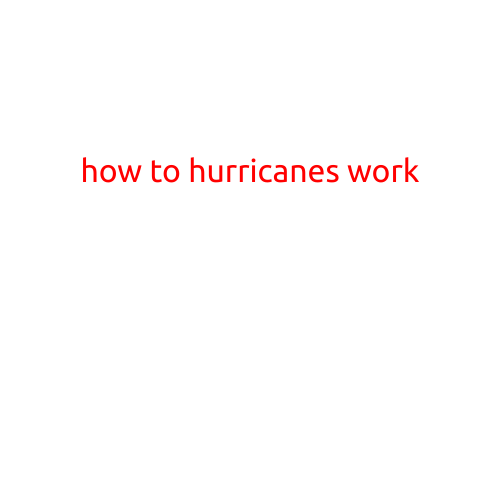
How Hurricanes Work: Unraveling the Science Behind These Powerful Storms
Hurricanes are powerful tropical cyclones that can bring devastating winds, torrential rains, and storm surges to coastal communities around the world. But have you ever wondered how these massive storms form and gain their strength? In this article, we’ll delve into the science behind hurricanes and explore the factors that contribute to their formation and intensity.
What is a Hurricane?
A hurricane is a type of tropical cyclone that forms over warm ocean waters in the Atlantic Ocean, Caribbean Sea, and Gulf of Mexico. It’s a rotating, organized system of clouds and thunderstorms that can span hundreds of miles in diameter. Hurricanes are also known as typhoons or cyclones in other parts of the world.
The Formation of Hurricanes
Hurricanes begin as a disturbance over warm ocean waters, typically at a temperature of at least 26.5°C (80°F). These disturbances are fueled by the warm water, which heats the air above it and causes it to rise. As the air rises, it creates an area of low pressure near the surface, which in turn pulls in more air from the surrounding area.
As the air rises and cools, it condenses, forming clouds and releasing heat. This heat causes the air to rise even further, creating a self-reinforcing cycle that drives the storm’s circulation. The Coriolis force, a result of the Earth’s rotation, then causes the winds to rotate counterclockwise in the Northern Hemisphere and clockwise in the Southern Hemisphere.
The Anatomy of a Hurricane
A hurricane consists of several key components:
- Clouds: The storm’s outer ring of clouds, which can stretch for hundreds of miles. These clouds are made up of water droplets and ice crystals.
- Eye: The center of the storm, characterized by clear skies and a sinking motion. The eye is the calmest part of the storm, but it’s also the most dangerous, as it’s surrounded by the strongest winds and heaviest rainfall.
- Rainbands: Bands of heavy rain and thunderstorms that spiral outward from the center of the storm.
- Eye wall: The ring of thunderstorms that surrounds the eye, which is the strongest part of the storm.
Factors that Influence Hurricane Strength
Several factors contribute to a hurricane’s strength, including:
- Sea surface temperature: Warm ocean waters are essential for hurricane formation and intensification.
- Wind shear: Changes in wind direction and speed with height can disrupt a hurricane’s rotation and strength.
- Humidity: High humidity levels can contribute to heavy rainfall and storm intensification.
- Distance from land: Hurricanes that form over open water can strengthen before making landfall, while those that form closer to land may be weakened by interaction with the land.
The Impact of Hurricanes
Hurricanes can have devastating effects on coastal communities, including:
- Flooding: Storm surges, heavy rainfall, and storm tides can cause widespread flooding and damage.
- Strong winds: Hurricane-force winds can knock down trees, power lines, and buildings, leaving thousands without electricity or shelter.
- Storm surge: A rise in sea level caused by the storm’s winds and low atmospheric pressure, which can cause widespread flooding and erosion.
Conclusion
Hurricanes are complex and powerful storms that require a deep understanding of the factors that contribute to their formation and strength. By exploring the science behind these storms, we can better prepare for and respond to them, ultimately saving lives and reducing the impact of these devastating events.





